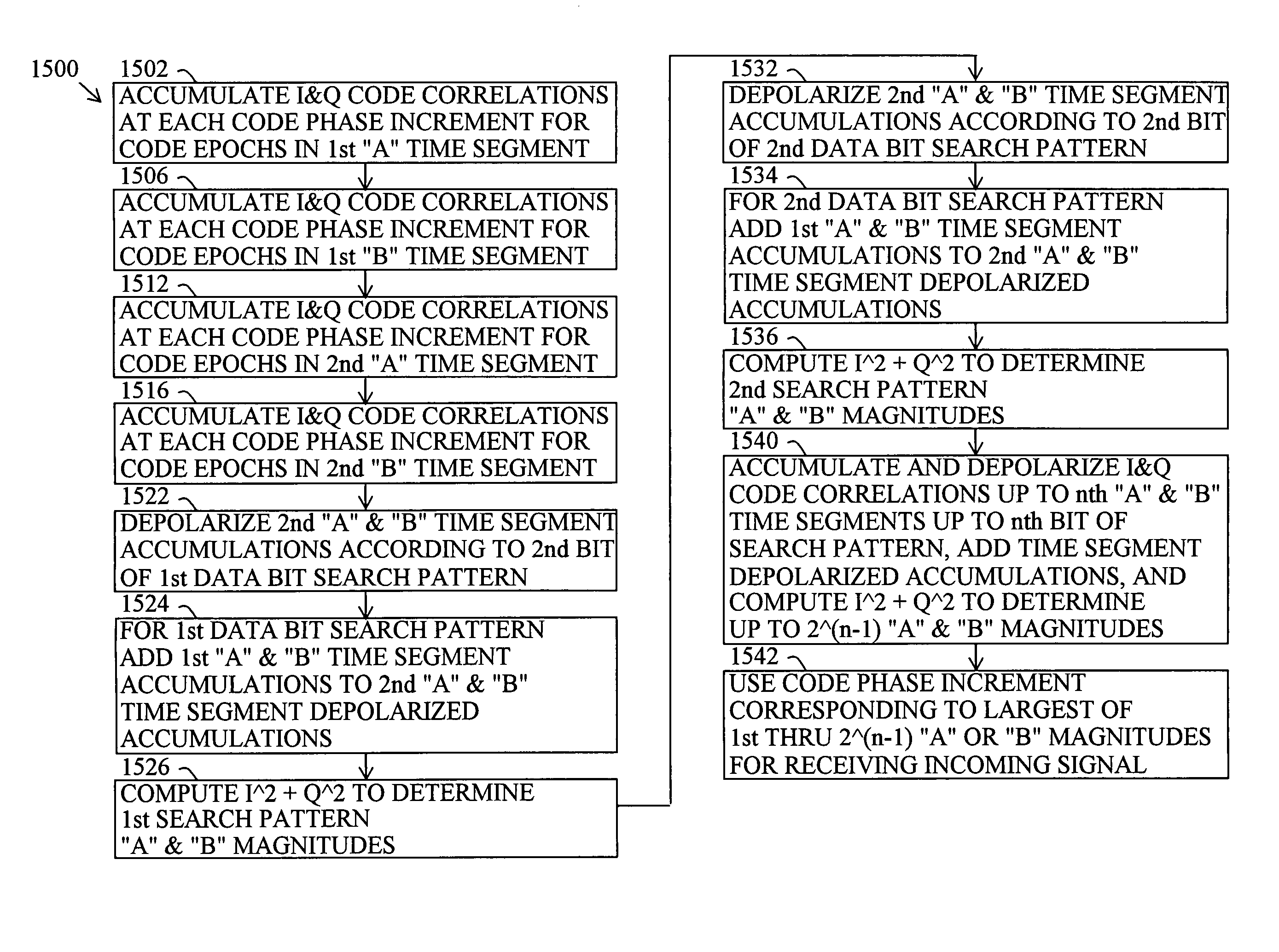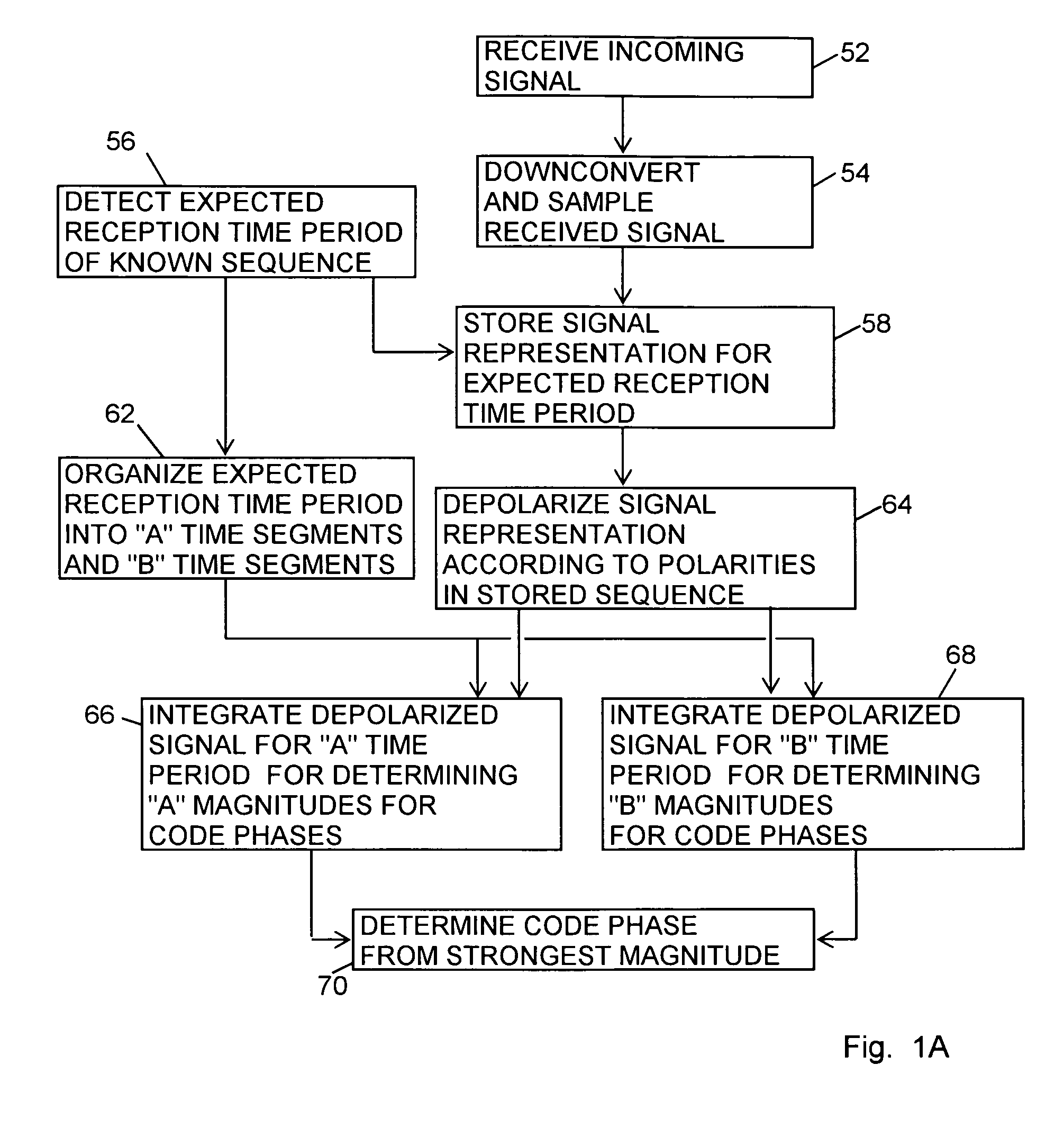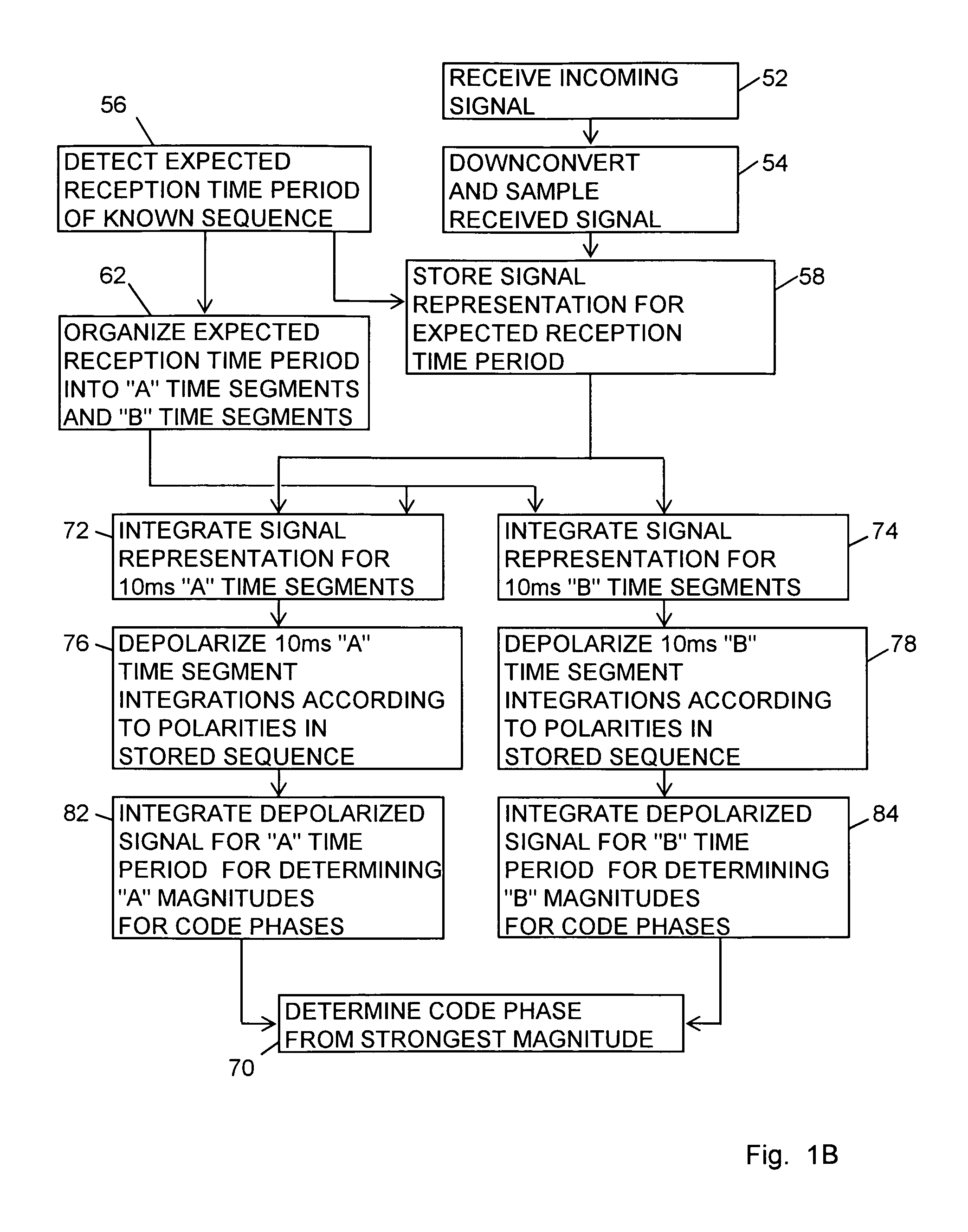Signal receiver using data bit search in alternating time segments
a signal receiver and data bit technology, applied in the field of global positioning system (gps) receivers, can solve the problems of nullifying the processing gain of integration times beyond 20 ms, limiting the application range of the global positioning system, and difficult to use the gps indoors, so as to improve the probability of rapid acquisition of weak signals, increase the tolerance for time errors, and increase the signal processing gain
- Summary
- Abstract
- Description
- Claims
- Application Information
AI Technical Summary
Benefits of technology
Problems solved by technology
Method used
Image
Examples
case 01 or 10
sition. Perform coherent integration throughout first A time segment, invert, then continue coherent integration throughout second A time segment to determine correlation levels for A time period. Similarly for B time segments.
[0133]FIG. 12B is a time chart showing “A” and “B” time segments and showing “A” and “B” magnitudes for a reception time length having three data bit time lengths. For the GPS C / A the data bit time length is 20 milliseconds. The “A” and “B” time segment lengths are one-half of the data bit time length. For the GPS C / A the time segment length is 10 milliseconds. An exemplary actual, but unknown, data bit pattern for the incoming signal is shown as 101 followed by a 0. The timing is arbitrarily shown for the data bit transitions falling midway during the “B” time segments.
[0134]The data bit generator 1002 generates four data bit search patterns—a 1st data bit pattern of 000 or its inverse 111, a 2nd data bit pattern of 001 or its inverse 110, a 3rd data bit patt...
case 001 or 110
) Perform coherent integration throughout first A time segment; do not invert, then continue coherent integration throughout second A time segment; invert, then continue coherent integration throughout third A time segment to determine correlation levels for A time period. Similarly for B time segments to determine correlation levels for B time period.
case 010
or 101) Perform coherent integration throughout first A time segment; invert, then continue coherent integration throughout second A time segment; invert, then continue coherent integration throughout third A time segment to determine correlation levels for A time period. Similarly for B time segments to determine correlation levels for B time period.
PUM
 Login to View More
Login to View More Abstract
Description
Claims
Application Information
 Login to View More
Login to View More - R&D
- Intellectual Property
- Life Sciences
- Materials
- Tech Scout
- Unparalleled Data Quality
- Higher Quality Content
- 60% Fewer Hallucinations
Browse by: Latest US Patents, China's latest patents, Technical Efficacy Thesaurus, Application Domain, Technology Topic, Popular Technical Reports.
© 2025 PatSnap. All rights reserved.Legal|Privacy policy|Modern Slavery Act Transparency Statement|Sitemap|About US| Contact US: help@patsnap.com



